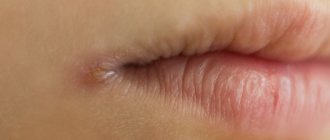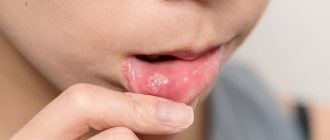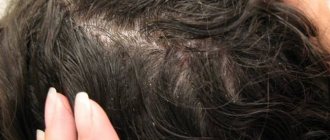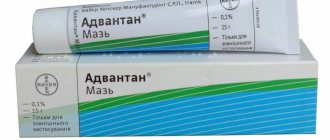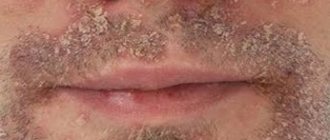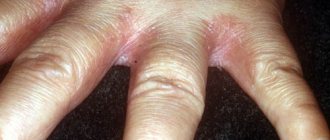The burning sensation that occurs in the body or separately in the limbs says a lot about the state of a person’s health. If you do not have a bruise or burn, then this feeling does not arise just like that; usually it is an indicator of some, possibly serious, illness. A sharp burning sensation in the body, which is accompanied by a number of other symptoms, is the main sign of a possible stroke. If such a symptom appears regularly, then you should not wait, you must immediately undergo a medical examination.
Causes
Physiological factors
Burning usually occurs in people with sensitive skin, even in the absence of a pathological factor. An unpleasant symptom is provoked by wearing itchy clothing or things made of synthetic materials. Women may experience a burning sensation on their face after applying skincare or decorative cosmetics, even if these products do not cause allergies. A typical cause of tingling and burning sensations on the skin of the legs is fatigue after a long walk.
Burns
Most often, symptoms are caused by exposure to high temperature or solar radiation. Any burn is accompanied by a severe burning sensation of the skin, which begins even during the action of the damaging factor and lasts from several days to several weeks. The skin appears pink or bright red in color; with deeper lesions, blisters filled with clear or cloudy contents form.
A burning sensation constantly bothers a person. The symptom becomes more noticeable when touching the affected area, applying medicinal ointments and sprays. The discomfort is greatly aggravated if the burn area comes under warm or hot water (for example, when swimming). As healing progresses, the burning sensation subsides and is replaced by periodic tingling and itching of the skin.
Chemical and electrical burns are characterized by deep penetration of the damaging agent - right up to the hypodermis, muscles and underlying tissues. With such injuries, burning fades into the background, since the main complaint is unbearable pain in the area of the destroyed epidermis and dermis. Burning sensations in the skin occur immediately at the moment of injury, when massive tissue destruction has not yet occurred.
Burning skin
Allergy
Skin hypersensitivity reaction is the second most common cause of burning skin. The symptom is determined in predisposed people upon contact with allergens: plant pollen, cosmetics, animal hair, food. Allergic burning is combined with urticaria, itchy skin rashes in the form of papules and vesicles. Watery eyes, sneezing, and discharge of clear mucus from the nose are often associated.
A burning sensation can be one of the components of seasonal allergies (hay fever). Sometimes this symptom becomes a harbinger of an attack of bronchial asthma: in this case, unpleasant manifestations are localized in a limited area and are accompanied by the presence of red spots on the skin. Often, burning sensations accompany pseudo-allergies when taking histamine liberators (chocolate, citrus fruits, strawberries).
Contact dermatitis
Burning skin is typical of the acute erythematous form of contact dermatitis, provoked by exposure to an irritant. The patient experiences painful and burning sensations, tingling, itching in the affected area. The skin takes on a bright red tint. In the bullous version of the disease, the burning sensation is complemented by the formation of blisters filled with clear liquid. Insignificant severity of the symptom occurs in the chronic form of dermatitis.
Psoriasis
Moderate itching and burning of the skin develops with the exudative form of the disease, which is manifested by the formation of scales and pronounced weeping. A burning sensation in the affected areas is disturbing during exacerbation of psoriasis. Symptoms intensify when scratching damaged skin or bathing. As a rule, the exudative process is detected in those suffering from endocrine pathologies (diabetes mellitus, hypothyroidism).
Herpes
Painful symptoms with apparently intact skin are characteristic of herpes zoster. Patients complain that the skin constantly burns, in order to reduce discomfort, they want to scratch it. Unpleasant sensations arise suddenly, last 12-24 hours, then specific vesicular rashes form at this site. In this case, severe burning pain persists until recovery, and can bother a person for a long time after the rash disappears.
With herpes simplex, the burning sensation of the skin is not so intense. Symptoms develop simultaneously with the appearance of vesicles filled with clear exudate. Patients note itching and an unpleasant tingling sensation in the affected area. The pain is moderate, unlike shingles. The burning stops when the rash heals and disappears.
Skin infections
Burning is one of the main symptoms of bacterial (impetigo, erysipelas), viral (molluscum contagiosum, HPV) or fungal (dermatophytosis, rubromycosis) skin lesions. Taking into account the etiology of the disease, burning sensations are accompanied by various local symptoms: vesicular and pustular rashes, peeling, lichenification.
Senestopathies
Pathology is observed in mental disorders: Kandinsky-Clerambault syndrome, hysterical neurosis, bipolar psychosis. Patients feel an intense burning sensation, sometimes feeling as if the whole body is “burning.” To cope with painful symptoms, the patient constantly scratches the skin and tries to apply ice. In some cases, the burning is so intense that the person rushes around the room, screaming or moaning.
Complications of pharmacotherapy
A burning sensation of the skin occurs with drug-induced dermatitis. Unpleasant symptoms develop both when drugs are applied externally (ointments, gels) and when drugs are administered orally or parenterally. Areas of rash or weeping form on the skin, which are accompanied by an unpleasant burning sensation. With each subsequent use of allergenic drugs, the affected area increases.
Rare causes
- Congenital diseases
: Hartnup disease, porphyria. - Connective tissue damage
: scleroderma, systemic lupus erythematosus, Shulman's disease. - Vascular disorders
: rosacea, rosacea, obliterating atherosclerosis. - Malignant neoplasms
: squamous cell skin cancer, basal cell carcinoma, melanoma.
Burning symptoms
The burning sensation may be accompanied by other symptoms, which vary depending on the underlying disease, disorder or condition. They often affect the limbs and are also associated with various body systems.
Signs that may occur along with a burning sensation in the extremities:
- bleeding;
- formation of blisters from burns;
- numbness;
- pain;
- redness, warmth, or swelling;
- tingling;
- touch sensitivity.
Serious signs that indicate a life-threatening health condition are a sudden burning sensation in the extremities, accompanied by numbness or weakness on one side of the body. This symptom may be a sign of a stroke. If this occurs, seek immediate medical attention if you experience this sensation along with other serious symptoms.
A few other signs that may follow numbness or "hot" sensations in the extremities: a change in mental state known as confusion; rave; lethargy; hallucinations and delusions; slurred speech; sudden change in vision; loss of vision or eye pain; Strong headache. A burning sensation in this case indicates a stroke. If you feel a similar feeling in your body, it may be caused by damage to the nerve or skin in the surrounding tissues. Burns from chemicals or extreme heat, or exposure to toxic substances can damage nerves in the skin, resulting in a burning sensation.
Diagnostics
A specialist in the field of dermatology will determine the cause of the symptom; if necessary, doctors of other specialties will be involved in the examination. The dermatologist conducts a visual examination of the areas of the skin where the patient feels a burning sensation, after which he takes material for laboratory tests. Diagnostic search includes the following research methods:
- Dermatoscopy.
Under a microscope, the doctor examines the structures of the skin and identifies the initial stages of pathological changes. This is a simple and non-invasive method, which is indicated if the patient has a burning sensation in the area of new growths or suspiciously changed areas of the skin. - Luminescent diagnostics.
Inspection of the affected area using a Wood's paw allows you to quickly confirm ringworm, pityriasis versicolor, and erythrasma. The technique is used for rapid diagnosis of pseudomonas infection and acne. - Scraping examination.
The upper layer of the epidermis from the affected area is taken for microscopic examination. This method is informative in the diagnosis of fungal and bacterial infections. If a dermatologist needs to clarify the nature of the pathological process, a histological examination of a skin biopsy is prescribed. - Blood tests
. A clinical test is performed to detect signs of inflammatory or autoimmune diseases. An increase in eosinophils in the hemogram indicates the allergic nature of the burning sensation. To assess the activity of dermatological diseases, a biochemical analysis with acute phase indicators and a proteinogram is prescribed.
During the period of remission of allergic dermatoses, prick tests are recommended to determine provoking factors and select ASIT. If there is a burning sensation in the lower extremities in elderly patients, duplex scanning of the peripheral arteries and arteriography must be performed. If complaints of burning skin are combined with inappropriate behavior of the patient, a psychiatric examination is prescribed.
Dressing for skin burns
What is a burning sensation in the body and limbs?
There are many reasons why a person may experience tingling and burning in the limbs and body (paresthesia - sensations on the skin). The most common are: diabetes; peripheral neuropathy; multiple sclerosis; sciatica; fibromyalgia. Tingling and burning sensations in the legs and arms can also be caused by circulatory problems, which are temporary, or simply the result of “overstaying” on the leg. The feeling of paresthesia ("pins and needles") is annoying in its mildest forms and disturbing in its most extreme forms. A burning sensation, whether in a specific area of the body or in a wide range throughout the body, is not pleasant. It may also indicate a number of underlying problems. Depending on the other symptoms that accompany the burning sensation, the cause could be anything from a reaction to severe trauma to an indication of vascular disease.
Treatment
Help before diagnosis
If the burning sensation is caused by a slight burn of the skin (only redness, no blisters), it can be treated with dexpanthenol sprays. Medicines quickly relieve symptoms, soothe the skin and promote its healing. If you experience severe burns, rashes or other symptoms, consult a doctor. To quickly relieve burning sensations, experts prescribe gels and sprays with a soothing and cooling effect.
Conservative therapy
Therapy is determined by the underlying disease. Often, burning skin is caused by dermatological pathologies, to eliminate which an integrated approach is practiced. For mild cases of the disease, local remedies are sufficient: lotions and wet-dry dressings for weeping, ointments and rich creams for peeling. They use medications with antiseptics and antibiotics, topical steroids, and antimycotics.
For allergic dermatoses, systemic detoxification therapy is prescribed: antihistamines, sedatives, methods of extracorporeal hemocorrection. Antifungal drugs in tablets are recommended for the treatment of common mycoses. Herpes zoster requires intravenous or oral acyclovir.
Physiotherapy methods are effective in a comprehensive treatment regimen. To eliminate rashes, accelerate skin healing and stimulate immune defense, laser therapy, magnetic therapy, and ozone therapy are prescribed. In the remission phase of chronic dermatoses, skin irradiation with ultraviolet light and mud therapy are used. With senestopathies, patients require the help of a psychiatrist.
Diseases
Food allergies develop when certain foods are consumed. These include all kinds of sweets, chocolate, citruses and exotic fruits, eggs, spices, pickles and pickled vegetables. Often there is no cure for food allergies. It is enough to remove provoking foods from the diet and the symptoms will disappear on their own. However, if signs of general intoxication appear - vomiting, nausea, diarrhea, you should consult a doctor.
In addition, some components of pharmacological drugs can be allergens. Rash and redness of the skin are caused by taking antibiotics. In severe cases, anaphylactic shock may develop.
Contact allergies occur when the skin is directly exposed to an irritant. Hygiene and household chemicals, cosmetics, and perfume can act as an allergen. Sometimes the cause of redness is tight shoes and items of clothing, for example, belts, elastic bands, straps. Jewelry and costume jewelry can cause irritation.
Stress as a cause of itchy skin. You can often notice that a person’s face turns red when very excited. However, with constant nervous tension, a rash may appear on the body, which itches and leaves significant discomfort. In addition to external medications, sedatives are prescribed in such situations. Sometimes serious psychotherapy becomes necessary.

